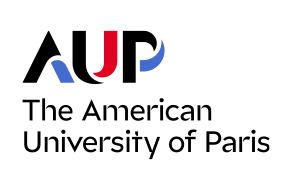And the Streets Will be Stained Red

The winemakers heaved with all their strength as many others stood round, encompassing the massive steel cylinder. Out of breath and full of ire they pressed on, their effort buttressed by the conclusion that it was they who must end this, it was up to them to make a stand. With a final pull, the wheel capitulated, releasing the tides it once kept at bay. They stepped back and watched as the ground drank in the culmination of their fury, the streets stained crimson.
This account of frustrated winemakers sabotaging an elicit shipment of Spanish wine is but a snapshot of the tumult, tension, and anger left to simmer for over a decade, as thousands of wine producers here in France have been made to endure the habitual hijacking of their history and heritage. Cultural grifters from across the globe continue to cash in on the prestige and tradition of some of the world’s most important and storied wines. With millions upon millions of bottles of counterfeit French wine being poured into the market each year, it’s time to draw attention to these largely unaddressed acts of cultural rapine and highlight what we can do to help combat it.
Image Credit: Simon Solberg-Arntsen
What’s going on?
For over a decade there has been a sharp increase in the prevalence of fraudulent wines being passed off as higher quality French ones. According to a report from a branch of the French Ministry for Economy, Industry, Digital Affairs, and Investigation, during the span of 2016 to 2017 alone, over 10 million bottles of Spanish Rosé were fraudulently labeled and sold as more high quality and expensive French Rosé.
Similarly, the ministry reported that between October 2013 and June 2016, over 26 million bottles of knock-off Spanish wine were marketed as Côtes du Rhône wines. 1.3 million of these bottles were mislabeled as hailing from the much-acclaimed Châteauneuf-du-Pape région, thus increasing profit from sales exponentially.
This issue is not unique to just Europe. As early as 2011, reports from China detail a similar trend. Former President of the National Committee of French Foreign Trade Advisors (CNCCEF) Wine and Spirits Commission James de Roany remarked to Wine Spectator in 2015 that “for every real bottle of French wine in China, there is at least one counterfeit bottle of French wine, and the situation is only getting worse. It's enormous.”
What’s the draw?
Author and legendary French winemaker Emile Peynaud perhaps summed it up best stating, “wine reflects the culture of the people who produce it, as well as the region (terroir), for it is not one of nature’s free gifts.”
This idea of terroir is one that cannot be easily translated- in fact, it has no direct translation in any language. Rather, it is best communicated through the wine itself. For within each drop is instilled the tradition and history of the generations that have labored to produce it. Each glass tells the tale of a people’s passion for their home and their heritage, their commitment to the land and traditions that have helped to shape and define their culture.
Over the centuries, this relationship has resulted in the production of some of the world’s most exceptional and sought-after wines. Producers across France labor in accordance with stringent regulations to ensure the impeccable quality of their work and this manifests in a higher value wine. A fact Frédéric Rouanet, President of Winegrowers of Aude, attests to saying, “if a French vineyard produced wine using the Spanish regulations, he quite simply couldn’t sell it [as French].”
What can you do?
The Covid-19 pandemic has severely affected the French wine industry, slashing regional tourism and vendor demand. Such factors have left it fighting to get back on its feet, its recovery plagued by continued fraud in the marketplace.
However, you can help with this. Whether you are an apathetic layman or Fortunato himself, there are some key things you can look for to ensure that whenever you buy a bottle of French wine you are getting your money’s worth and aiding in this battle for cultural preservation.
First, look for the certification of the wine appellation, the Appellation d'Origine Contrôlée (AOC), either on the front or back of the bottle. This is the certification that verifies the wine is from the region indicated on the label and produced according to said region’s regulations.
Image Credit: Caleb Klubben
Second, wine producers are required to state where the wine is originally from on the label. Look on the front or back of the bottle for a statement verifying the wine is actually from France, such as "Produit de France". If it does not say this or says “wine of Europe” or “wine of the EU” it is most likely not French.
Third, every wine producer is required by French law to state the name and address of the Château/vineyard and/or the address of any distributors. You can always look these up to ensure that they are the legitimate French wine producers they market themselves to be. Apps such as Vivino, which allow you to scan the label and get the details for that particular wine are a great resource as well. Additionally, many winemakers are now including QR codes that allow consumers to verify all of the wine’s authenticating information and connect directly to the producer and distributor.
Now next time you find yourself in the wine aisle, you can play an active role in helping to safeguard one of this country’s most sacred traditions.
Image Credit: Caleb Klubben









